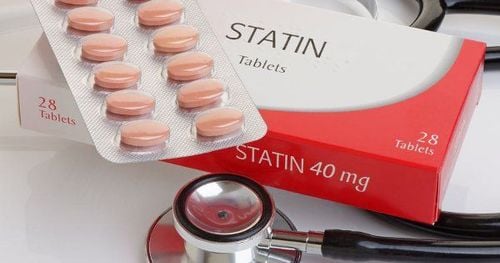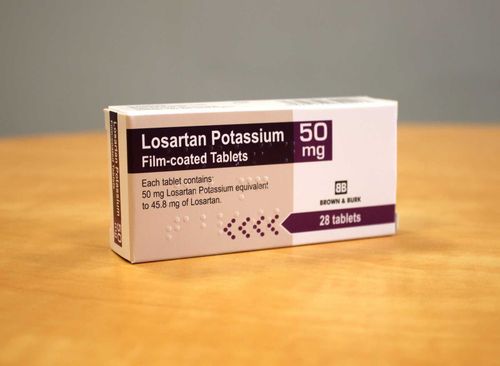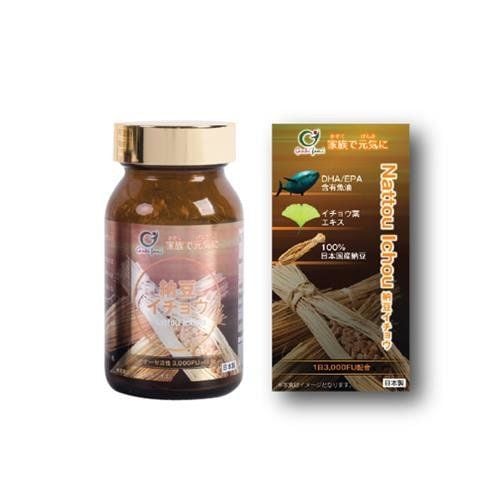This is an automatically translated article.
Traumatic brain injury and cerebrovascular accident are two common diseases with severe neurological sequelae. In addition to the prescribed drugs, patients can help protect and restore brain cells with Somazina products. So what is Somazine and how does it work?
1. What is Somazine?
Somazine contains the active ingredient Citicoline, belongs to the group of psychotropic drugs and is indicated for use mainly in the treatment of traumatic brain injury or the treatment of complications of cerebrovascular accident. Somazine is not allowed to be prescribed to people with a history of allergy to Citicoline and the ingredients contained in Somazia or to patients with increased parasympathetic tone.
Somazina is researched and developed by the pharmaceutical company Ferrer Internacional S.A. and distributed exclusively by Tedis, France. Currently, Somazine has been imported into Vietnam, tested to meet quality standards and allowed to circulate on the Vietnamese market.
Somazina is prepared in the form of a solution with 2 uses, including:
Somazina 1000mg/4ml injection form, each box includes 5 ampoules; Somazina oral dosage form 1000mg/10ml, each box includes 1 vial of 30mL volume and 1 metered dose pump.
2. Pharmacological characteristics of the drug Somazina
2.1. Pharmacodynamics of Citicoline The active ingredient Citicoline in Somazina has the effect of stimulating biosynthesis of structural phospholipids of nerve cell membranes. Therefore, administration of Somazine can improve membrane function similar to ion exchange pumps and receptors, which are essential in nerve impulse conduction. The membrane stabilizing action of Somazina improves transmembrane reuptake in cases of cerebral edema.
Experimental studies show that citicoline can inhibit the activation of some phospholipases (such as A1, A2, C and D), prevent the formation of free radicals, limit damage to the membrane system and protect the system. antioxidant defenses such as glutathione. Another effect of Citicoline is to protect nerve cell energy storage, inhibit programmed cell death, and stimulate acetylcholine synthesis.
Experiments show that citicoline in Somazina has the ability to protect neurons in ischemic stroke, while significantly improving function in patients with cerebral infarction and slowing down the progression of lesions. In people with traumatic brain injury, citicoline promotes recovery, reducing the time and severity of brain cells after injury.
Another effect of Somazina is to improve concentration, cognitive ability, prevent memory loss and cognitive or neurological disorders caused by cerebral ischemia.
2.2. Pharmacokinetics Somazine is well absorbed either orally, intramuscularly or intravenously, and plasma choline concentrations are significantly increased regardless of route of administration. Oral Somazine is almost completely absorbed and bioavailability is similar to that of intravenous administration.
After absorption, Somazina is metabolized in the intestines and liver to choline and cytidine. The active ingredient Citicoline is widely distributed in the brain structure, rapidly binding to structural phospholipids and cytidine to cytidine nucleotides and nucleic acids.
Only a small amount of a dose of Somazina is present in the urine and faeces (less than 3%), while about 12% of the dose is excreted in exhaled CO2.
3. Instructions on how to use Somazine
3.1. Somazine injection 3.1.1. Dosage Adults with cerebral hemorrhage due to trauma or ischemic stroke: Somazine 1000mg/time, 2 times/day. The duration of treatment is about 6 weeks; Adults with neurological sequelae: Somazine 500 to 1000mg per day, treatment duration is about 12 weeks; Elderly: No need to adjust the dose when using Somazine; Children: Somazine is not recommended for use in children, the benefits and risks should be weighed before use. 3.1.2. How to take Somazina Somazina is designed as an injectable solution to be used only by professionally trained medical personnel; Somazine injection can be administered by intramuscular injection, slow intravenous injection (3 to 5 minutes) or intravenous infusion (infusion time 40 to 60 minutes). 3.2. Somazine oral drug 3.2.1. Specific dosage Adults: Take 3 times a day, 200mg of Citicoline each time, equivalent to 2ml of oral drug Somazina; Children: Use 2-3 times a day, 100mg of Citicoline each time, equivalent to 1ml of oral Somazina; Patients need to take Somazina continuously and regularly for a maximum period of 9 to 12 months. Absolutely do not change the dose on your own and must follow the dosage instructions of the treating doctor. 3.2.2. How to use Somazina oral drug Somazina oral drug is designed as a solution in a sealed vial, when using it, it is necessary to withdraw the drug from the bottle with the included metering pump; To withdraw the drug, the patient leaves the piston in the ready state. Then, insert the needle into the vial, gently pull the piston up to pull the drug into the canister until the piston line is level with the ml line according to the treatment instructions; Put the entire amount of medicine withdrawn into a drinking glass, which can be taken directly or diluted with about 120 ml of filtered water. Patients need to use Somazina immediately after dilution; The most effective time to take Somazine is during meals, this helps the drug to be fully absorbed and metabolized.
4. Side effects of the drug Somazine
During the treatment with Somazine, patients may appear some side effects, but most of them are uncommon and not too serious:
Appearance of hallucinations, headache, dizziness, dizziness, loss of consciousness. sleep ; Abnormally high or low blood pressure; Shortness of breath ; Visual disturbances, impaired vision, blurred vision; Digestive disorders such as nausea, vomiting, abdominal pain, diarrhea; Allergic reactions, rash, itching, erythema multiforme, subcutaneous hemorrhage.
5. Some notes when using Somazine
Care should be taken when using Somazine for people with asthma or a history of allergy to acetylsalicylic acid; Careful monitoring when administering Somazine to patients with fructose intolerance; After using Somazina, there may be symptoms of visual disturbances, decreased vision; Therefore, caution should be exercised when driving or operating complex machinery; Keep Somazina oral or injectable out of the reach of children. It should be stored in a cool, dry place, at a temperature of 27 to 30 degrees Celsius. Do not store in a humid, unhygienic place or places with intense direct light; Do not use if the vial of Somazina has sediment, discoloration, physical change compared to the original because this is a sign that the medicine has been damaged;
6. Somazina drug interactions
Concomitant use of Somazine with other products may affect Citicoline's ability to function, including absorption, distribution, metabolism, and elimination. This may decrease the effectiveness of Somazine or increase the risk of adverse drug interactions. Therefore, Somazina should not be used concurrently with drugs containing the ingredient Meclofenoxate or drugs that potentiate the effects of L-Dopa.
Please dial HOTLINE for more information or register for an appointment HERE. Download MyVinmec app to make appointments faster and to manage your bookings easily.













